Pineapple symbolism and meaning has changed over time. Here, we explain what a pineapple can symbolize, and some common uses of pineapple symbols from their first discovery and import to Europe and into the modern era.
Before Christopher Columbus landed in the Americas, the pineapple was South America’s little secret, treasured by local cultures. Nowhere else on Earth had yet seen, tasted, nor produced anything like this amazing fruit.
The Origins of Pineapple
The pineapple hails from the region between the countries currently known as Brazil, and Paraguay. Pineapples found around the world, from a Westerner’s supermarket shelves to roadside and sunbaked carts, are the main edible member of bromeliacae, alongside 2,000 other species under the same name.
The pineapple, unlike other members of its family, does not grow on trees. Pineapples are terrestrial; they grow with roots in the soil, separated and singular, away from the support of any other plants.
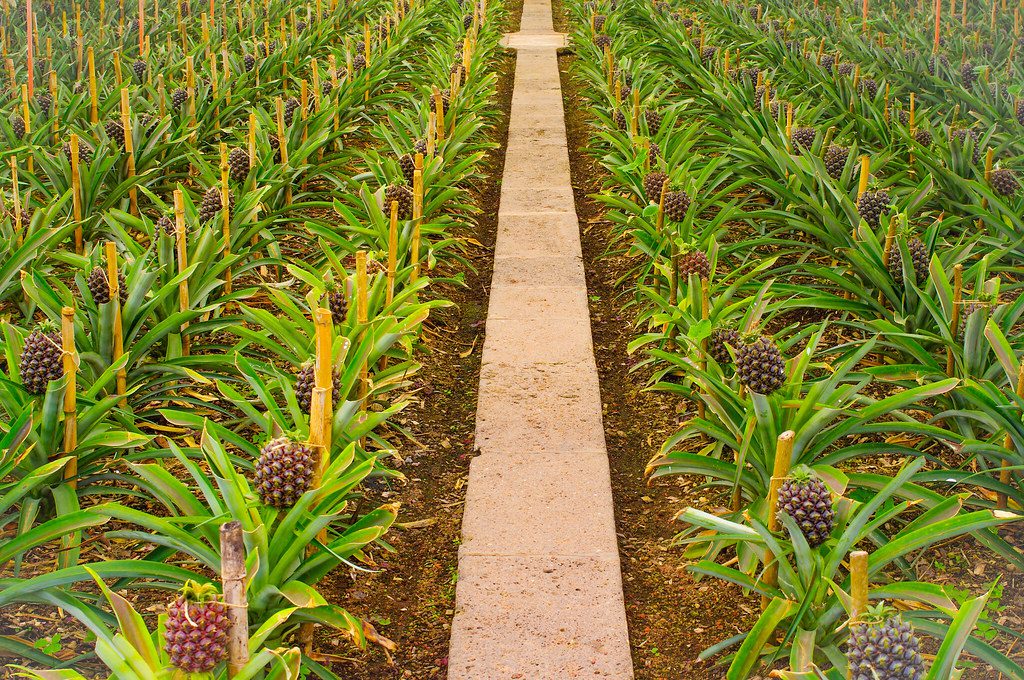
As a plant, it’s strangely adapted to endure periods of drought; a quirk of evolution given that rainfall is very frequent in a pineapple’s natural climate. Nature, clearly, was determined to produce and preserve this marvellous fruit.
Pineapples grow year-round, and do have the ability to live indefinitely. More commonly, on maturation and bearing fruit, a pineapple plant lasts two to three years. After that, it grows a new plant as an offshoot while the original plant slowly fades and gives way to the new.
What Did Pineapple Originally Symbolize?
The first known humans to run into the pineapple fruit were the Tupi-Guarani peoples. As inhabitants of greater Amazonia long before the European settlers landed, the Tupi-Guaranis were once of the largest language groups dominating the Brazilian coast, from the mouth of the Amazon to the modern day state of Sao Paulo.
The Tupi-Guaranis domesticated the pineapple and were the fruit’s earliest champions. Given they lived on the coast, they were one of the first indigenous groups to be encountered by Portuguese explorers in the sixteenth century.
Around seventy-five years after the first European explorers landed in the Americas, the Tupi-Guarani were visited by a French priest named Jean de Léry. Anecdotal evidence from de Léry and other Europeans provide scarce evidence that the pineapple played a symbolic role within their societies, in the same way many other foods and cultivated goods did.
A notable example of pineapple symbolism in the Americas can be found in Mexico. A Spanish missionary named José de Acosta visited Latin America in 1586 and described an Aztec temple depicting a god named Vitzilipuztli in Mexico.
This god was shown holding and five pineapples made of white feathers, set in the form of a cross held in his left hand.
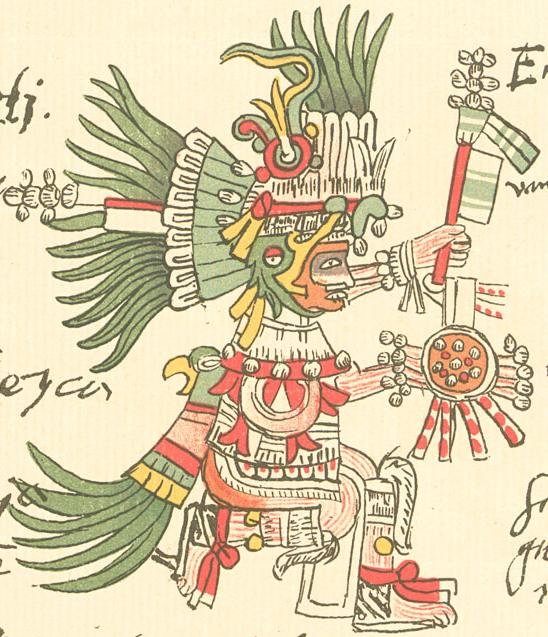
It has been suggested that the pineapple held meaning in the tribal rites of young men, because aspirants had to be physically strong to pick it, and get through the skin to the edible part.
As well, unripened pineapple can be a potent laxative.
It’s clear that – for at least some cultures in the Americas including the Tupi-Guarani – pineapples were held in high regard before European settlers fell in love with it.
What Did Pineapples Symbolize in Europe?
When the secret of the pineapple was out, courtesy of Portuguese explorers, the appearance of the pineapple impressed those fortunate enough to see one.
Early accounts cast the pineapple portray it like a rare, artificial beauty. Here, a quote from the enamoured Oviedo:
I have found equal care in the composition and beauty of this fruit beyond comparison. I do not suppose there is in the whole world any[thing] so exquisite and lovely in apperance.
Gonzalo Fernández de Oviedo y Valdés, commonly known as Oviedo
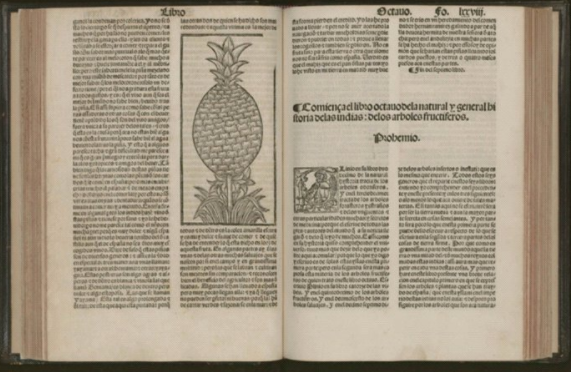
Pineapple Symbolism and Beauty
Much meaning was derived from the divine proportions of pineapple as a symbol of beauty.
Philosophers since Aristotle considered intrinsic beauty to arise from proportionality. Aesthetics often compared beauty to ‘order and symmetry and definiteness’. St Augustine, similarly, derived beauty from geometric form and ‘balance’.
Pineapples are rare among foodstuffs, especially natural ones, in that they readily symbolize divine proportions in the Fibonacci Sequence (also known as the Golden Spiral), with florets occurring in the sequence of 3, 5, 8, 13, 21, 34, 55, 89. Each consecutive number is the sum of the two preceding numbers.
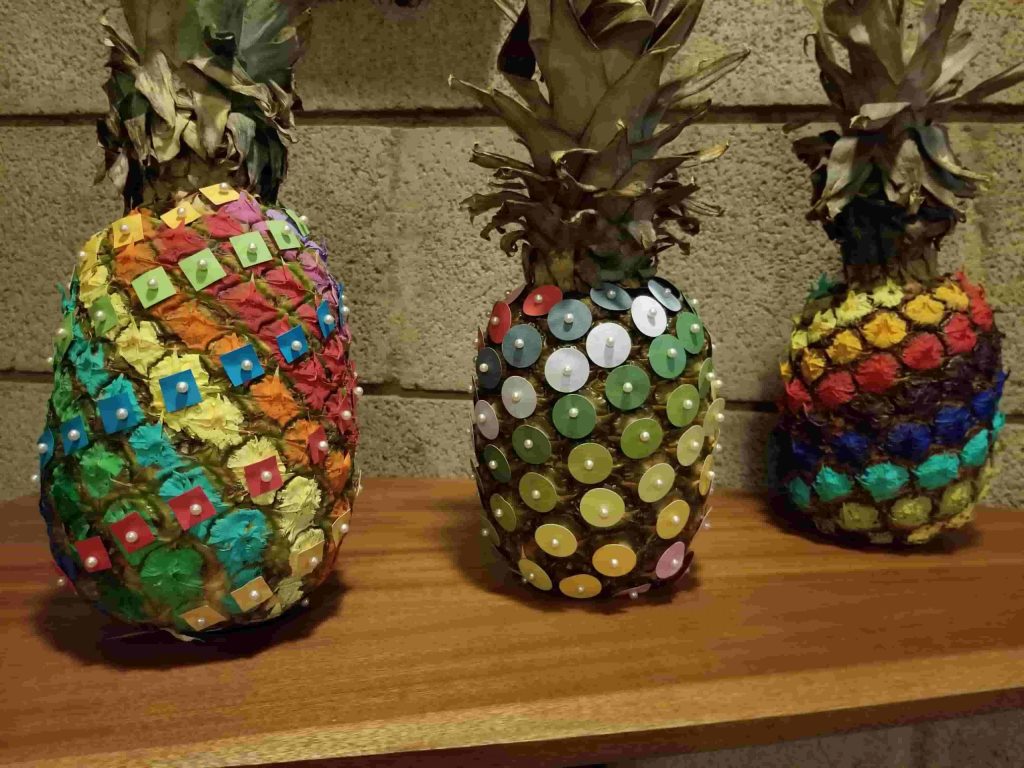
The florets of a pineapple are naturally arranged in two intersecting families of spirals, one winding clockwise the other anti-clockwise.
In theory, then, a pineapple’s natural makeup to the human eye symbolizes beauty.
In many ways, the taste of a pineapple was secondary to the way it looked for many early explorers. It represented the possibility that there might be Eden made real.
How Did Pineapples Relate to Royalty?
By the seventeenth century the pineapple had acquired a definite air of ‘Kingliness’, with the French priest Father Du Tertre the first to dub it ‘the king of all fruits’, given the divine proportions and crown of foliage. Ser Walter Raleigh, meanwhile, disagreed with the gender assignment and called it the ‘Princesse of Fruits’, likely with a nod to pleasing the future Elizabeth I, Queen of England.
For many years royalty maintained the strongest association with pineapple. The nobles of Europe called it a fruit chosen by God, partially to promote their own agenda of conquest in the ‘New World’.
There are indeed several reports of the East India Company and local governors gifting along with their petitions and requests to Charles II, landing them more favourable deals.
The association with royalty was crucial in forming the early meaning of pineapple. If the pineapple was good enough for the King, it was certainly good enough for those beneath him. Once and for all the pineapple was established as a symbol of social status. To own an exotic pineapple at this time is to be privileged.
Eighteenth centuty poets and novelists used pineapple symbolism to evoke images of distant lands and divine benevolence.
Pineapples were often used to represent fertility, abundance from abroad, and the bounty of Eden.
Pineapple Symbolism and Luxury
By the late eighteenth century, gardeners were successfully growing pineapples in Europe. Not many, but some. As the fruit became domesticated instead of imported, the idea of pineapples changed.
Representations of pineapples became focused on the idea of luxury and consumer culture. It took a lot of effort and skill to grow a pineapple somewhere like England, or France, and so it was reserved for the few who could afford the labor.
Taking into account inflation, it cost the equivalent of $8,000 in today’s money to raise a single pineapple to maturity, with custom-built and delicate greenhouses nurturing pineapple plants over three to four years.
For those who did not possess the extravagant funds or professional gardeners to grow their own, pineapple-rental shops began to spring up. By the 1770s, it had entered common speak as a compliment, where “a pineapple of the finest flavor” was a phrase used for anything that was the best of the best.
The 1760s saw the appearance of the earliest popular pineapple designs, green and gold glazed teapots, bowls, sugar dishes, tea caddies and more made of cream-colored earthenware invented by the businessman and potter Josiah Wedgwood.
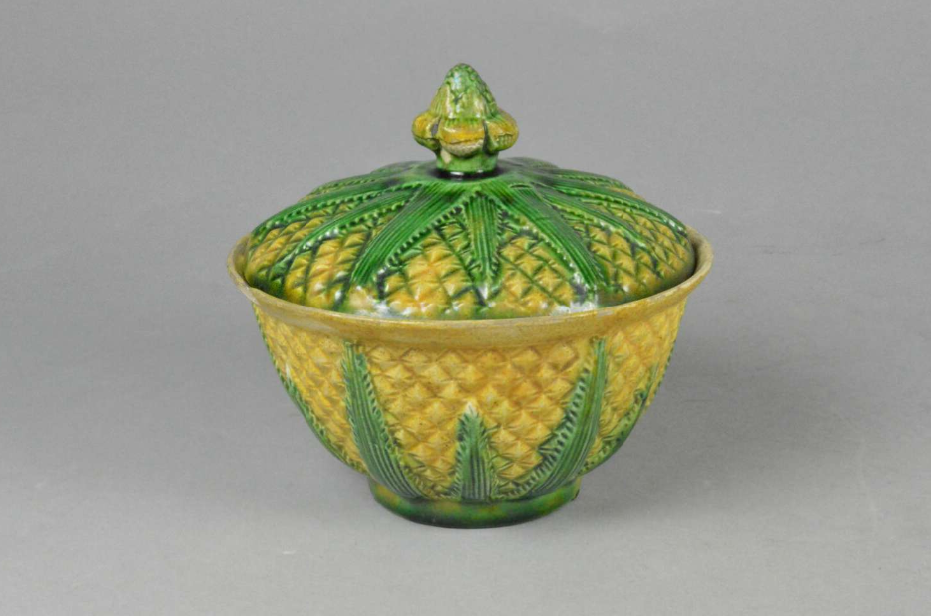
Produced 1755. Photo courtesy of The British Museum
Astronomically expensive at the time (and valuable still), it’s no surprise the pottery was so popular when paired with the motif of a pineapple.
Pineapple Symbolism in Architecture
Nowhere does the early symbolic power of pineapple in Europe impress more than the Pineapple at Dunmore Park in Stirlingshire. Here, a garden folly looms fifty-three feet high inside the walled apple orchard.
No one quite knows why the estate owner, Lord Dunmore, chose quite a massively proportioned pineapple as his garden centerpiece.
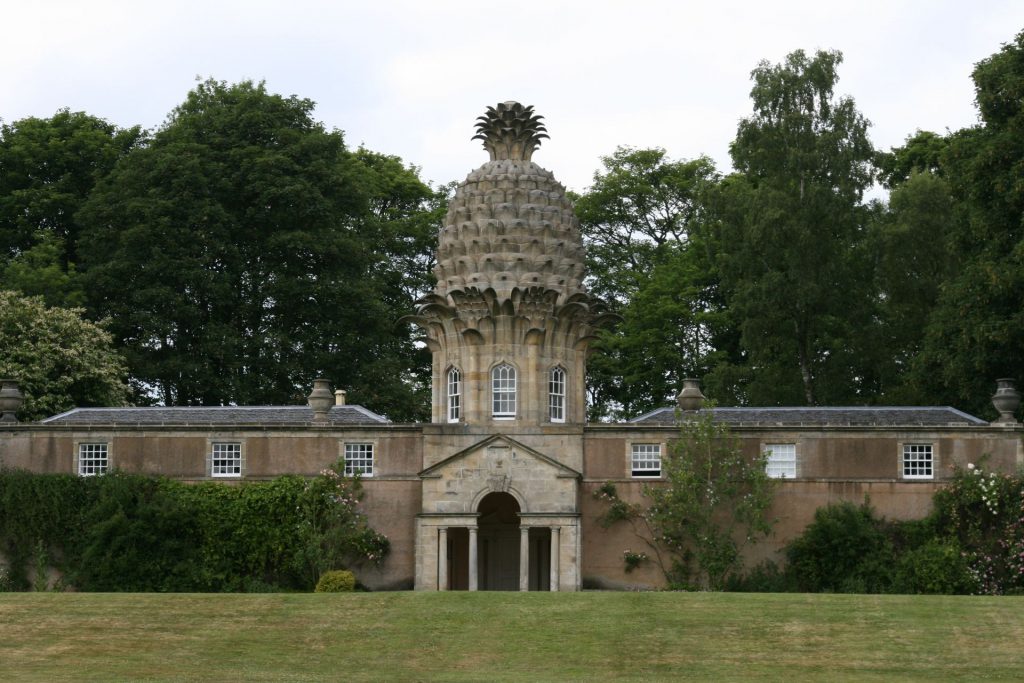
Yet when associated with architecture, pineapple symbolism becomes clear; with it’s lively green crown and golden yellowy color it is the exact opposite to the dull greys and greens of Britain. Pineapples then take on a meaning of escape, to a better and more brilliant world.
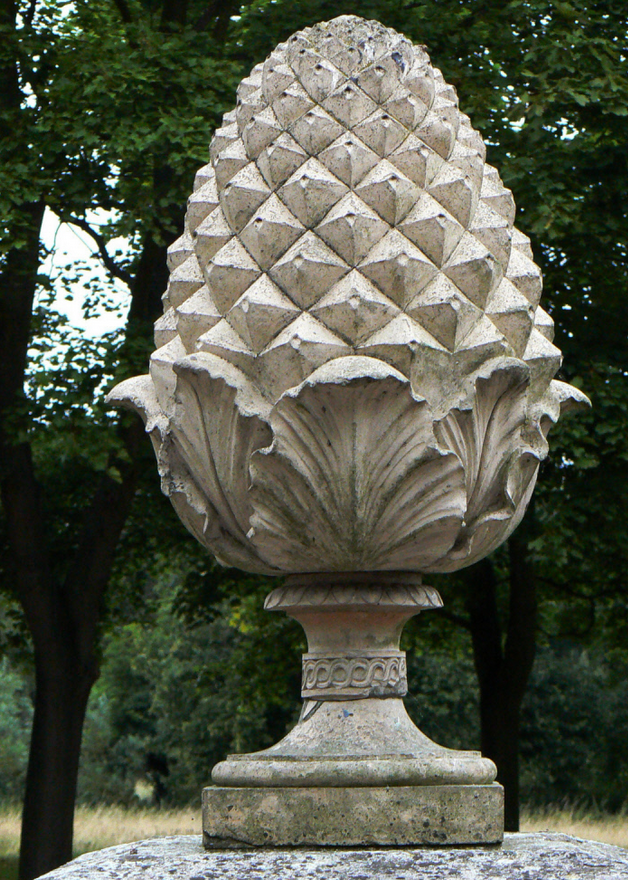
Carved pineapples at this time were mounted outside grand manor houses, implying the high standing of the family within. Carved pineapples and sculptures sat atop carriages, appeared in garden temples, were the subject of paintings and art, and enormous sculptures.
Pineapple symbolism in nineteenth century England meant good taste, nobility, and limitless wealth.
In 1881, the preserve of pineapples for the rich was shattered with a new dramatic development. That year saw the first successful importing of goods on a refrigerated ship. It meant pineapples could now be grown in more suitable environments at low cost and then shipped over to customers in Europe and elsewhere.
Fresh-tasting, sweet smelling and drenched in sun – how could anything back home compare to that fruit from the tropics?
The Modern Meaning of Pineapples
Yet the increasing quantities of pineapples imported in giant steam ships from the colonies caused the reputation of pineapple to diminish in European’s eyes. Industrialization, wars, and food shortages served to push the thought of pineapples even further from common consciousness by the early twentieth century.
Yet over the past few decades, the pineapple has witnessed a return to form. One only needs to search on Instagram for the general vibe of what ‘pineapple-y-ness’ is.
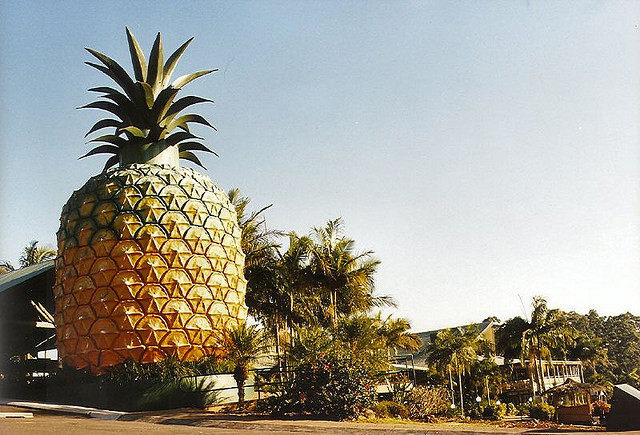
The vibrant and striking shape of pineapples appear all across fast and high fashion. On shot glasses, birthday cards, and stationary. The ability to get freshly grown ripe pineapples in pretty much any grocery store pairs nicely with the current whimsical meaning of pineapples, which symbolise positivity and friendliness.
If we refer to trend tracking sites like Trend Bible, we can see a definite modern correlation between the meaning of pineapple and the summer Olympics in Brazil, where the ‘King-Pine’ truly returned to it’s birthplace along the Brazilian coast as a symbol for hospitality and openness.
In the realm of consumer culture, pineapples have taken on a new layer of symbolism, often representing a blend of trendy aesthetics, positive vibes, and a sense of playfulness. Pineapple motifs and designs have become increasingly popular in fashion, home decor, and various consumer products.
The pineapple’s vibrant and tropical image appeals to individuals seeking a lively and optimistic lifestyle. It has become a symbol of leisure, enjoyment, and indulgence, often associated with summer, vacations, and relaxation.
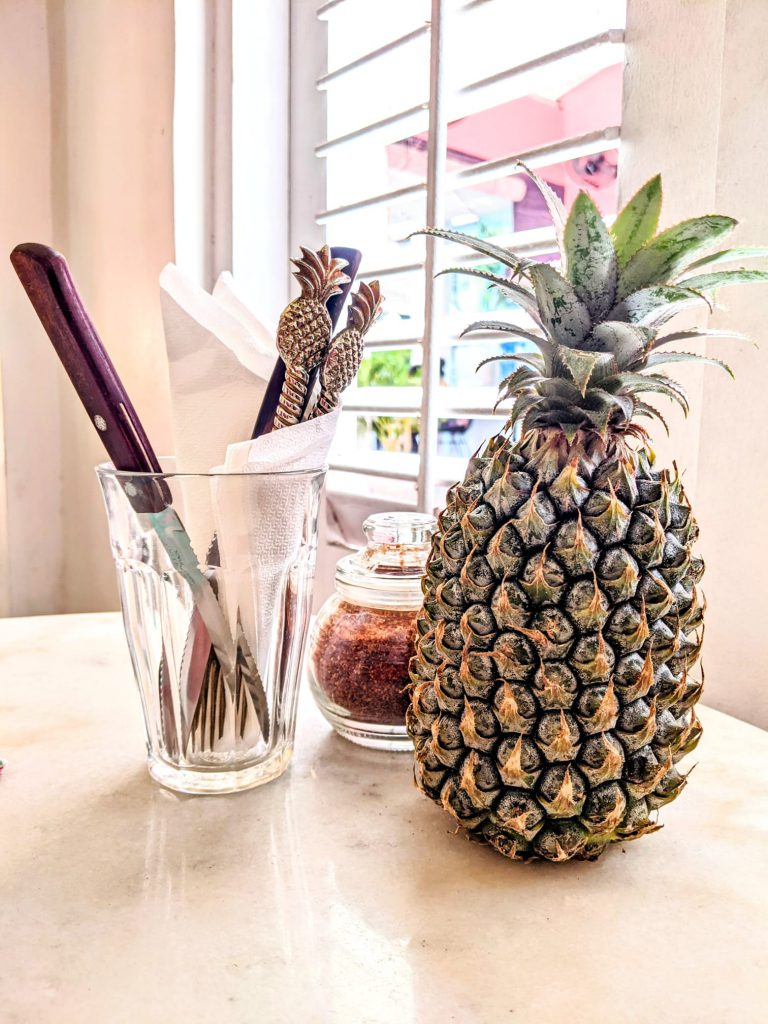
In the world of social media, the pineapple emoji (🍍) and #pineapple hashtag have gained traction as a way to express enthusiasm, happiness, and good times. The pineapple’s visually striking appearance and cheerful connotations have made it a favored symbol among influencers and trendsetters, popping up in everything from clothing and accessories to stationery and even tattoos.
So, whether it’s adorning your favorite t-shirt or gracing your smartphone case, the pineapple serves as a playful emblem of modern consumer culture, inviting individuals to embrace a joyful and stylish lifestyle.
Overall, modern pineapple symbolism sits nicely with the modern love for vacations and getaways. For infinite sun and vibrant colour. This idea is not so far away from the early adopters of pineapple – a little slice of heaven.


Excellent blog here! Also your website loads up fast! What web host are you using? Can I get your affiliate link to your host? I wish my site loaded up as fast as yours lol
Good – I should definitely pronounce, impressed with your site. I had no trouble navigating through all tabs as well as related info ended up being truly simple to do to access. I recently found what I hoped for before you know it at all. Quite unusual. Is likely to appreciate it for those who add forums or something, web site theme . a tones way for your customer to communicate. Nice task.
Some truly nice and useful information on this website, the fibonacci pattern is really remarkable now I see it
Hey, glad you liked it! The history of pineapples is really a fascinating subject. We’re thinking of a longer post, too, in future. Stay tuned!
I simply want to tell you that I’m all new to weblog and absolutely enjoyed this web-site, especially learning the fascinating history of pineapple. Who knew! Very likely I’m going to bookmark your site . You surely come with great stories. Kind regards for sharing
Hey Joannie, thanks for the kind words. The history of pineapples is really interesting indeed. This is a shortened version because there’s so much that could be said!